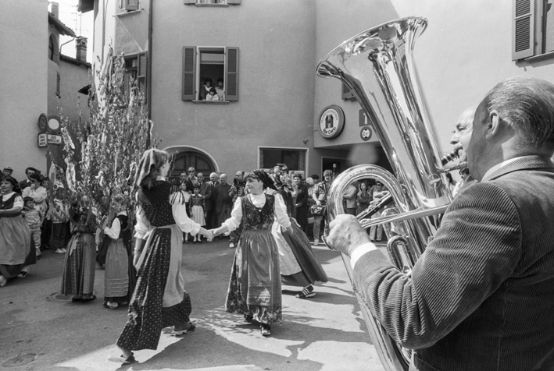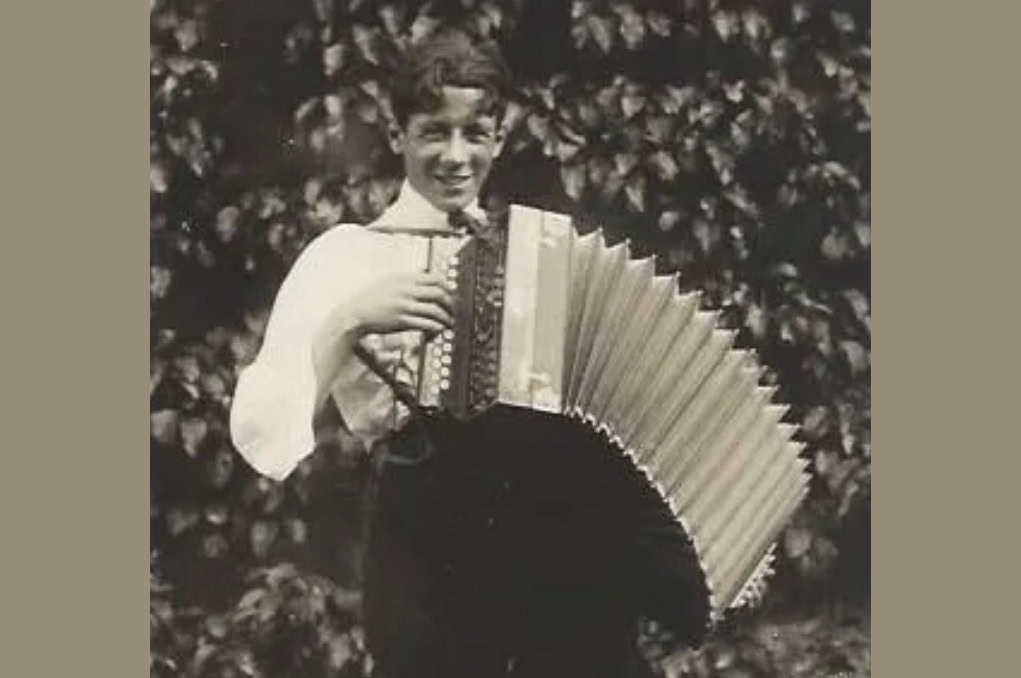Brass bands in Ticino
The Center for Dialectology and Ethnography (CDE) in Bellinzona is presenting a new publication on the history of the Bandella.

The bandella can still sometimes be heard at festivals and patron saints' ceremonies in Italian-speaking Switzerland. In the past, these small brass bands could be found practically everywhere and were firmly anchored in people's everyday lives. They were omnipresent at carnivals, village festivals, political gatherings and sporting events, and were even indispensable at weddings. They also entertained people on many excursions. Wherever the bandella appeared, it contributed to the general merriment and became an important part of the common cultural heritage of Italian-speaking Switzerland.
But until now, little was known about the origins of this musical tradition. How many bandelle were there in earlier times, who were the most important protagonists and what repertoire did they play? There was also little knowledge of what comparable musical ensembles existed in earlier times in the Alpine region and northern Italy.
A new publication by the Center for Dialectology and Ethnography (CDE) in Bellinzona is now shedding light on this little-researched cultural phenomenon in Ticino and the Italian-speaking Grisons. It deals with the topic from three perspectives: historical, cultural-anthropological and musical. The project was realized in collaboration with the Lucerne University of Applied Sciences and Arts - Music and brought to light surprising results about the history but also the current reality of the bandella. The tradition of the small brass band is still alive in Italian-speaking Switzerland and has the potential for renewal.
The researchers discovered that the bandella has been shaped by many different impulses throughout its long history. In the beginning, there was and still is a solid training of the music-making protagonists. This was once provided by the military, but today it is mainly in courses in brass band music. Tourism has greatly promoted the bandella as an identity-forming musical practice and thus contributed to its survival. In addition, the Bandella has been able to maintain its position by constantly adapting its repertoire to the needs of the present, with the intention of offering the audience contemporary and good entertainment. The Bandella is still so lively today because it has never given up the principle of spontaneous music-making in a cheerful atmosphere, despite the various fashions.
Book presentation in Bellinzona
The publication will be presented on Saturday, November 23, 2019, 4:30 pm
in the Palazzo Civico, Piazza Nosetto 5, Bellinzona
Greetings from:
- Carlo Piccardi, musicologist
- Paolo Ostinelli, Director of the Centro di dialettologia e di etnografia
- the authors of the book: Aldo Sandmeier, Emanuele Delucchi and Johannes Rühl (Lucerne University of Applied Sciences and Arts - Music)
The aperitif that follows will be accompanied by the legendary Bandella di Tremona and spontaneous musicians.
Caption
Photo of the "Maggiolata" in Caslano, 1986, with the Malcantonesi costume group and the Bandella di Banco
Information about the book
Note di bandella. Percorsi nel patrimonio musicale della Svizzera italiana
Centro di dialettologia e di etnografia, Bellinzona 2019, 225 p., 18 x 25 cm, CHF 30.-.
ISBN 978-88-944285-2-0with contributions by Aldo Sandmeier, Emanuele Delucchi and Johannes Rühl
Excerpts of the book will be available electronically in German from April 2020 on the Lucerne University of Applied Sciences and Arts project website (https://www.hslu.ch/de-ch/hochschule-luzern/forschung/projekte/detail/?pid=4076).








